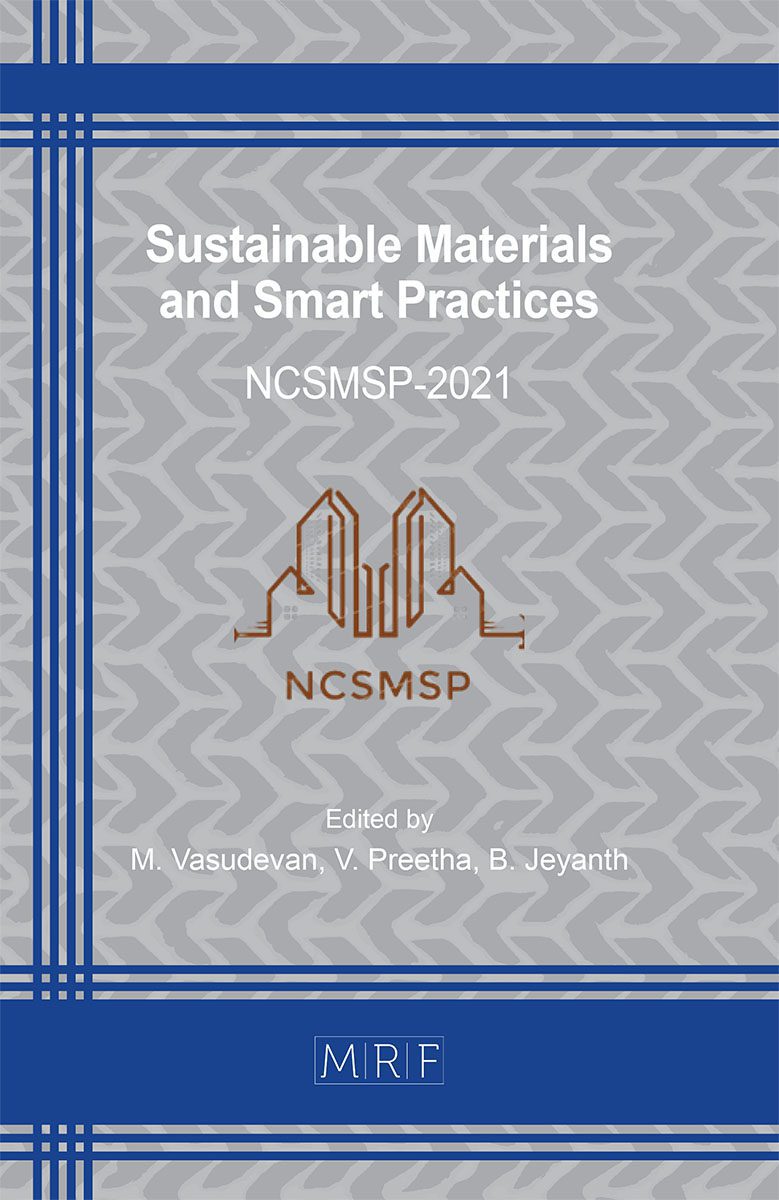Experimental Investigation on Properties of Herbocrete by using Terminalia Chebula (Kaddukai)
M.P. Indhu, S. Krishnamoorthi, M.P. Iniya, T. Shanmugapriya, A. Sanjeevi
download PDFAbstract. Additives are ingredients and chemicals that are mixed into concrete to improve its fresh state and change its properties. The majority of admixtures are sold as chemical compositions on the market. These chemical admixtures are exceedingly costly and harm the environment significantly. Adding admixtures to concrete, on the other hand, is not a new notion; it has been used and developed in numerous countries in the past. In this project, we are investigating the possibilities of using natural materials like “Terminaliachebula” (Kadukkai). Terminalia chebula extract is added in different concentrations of 2.5%, 5%, 7.5% to the cement concrete, and its effects on the workability and strength of concrete are studied. Terminalia chebula when added to cement mortar does not affect however, it improves workability while also increasing compressive strength by 1.832 times of reference concrete. But the initial setting time of concrete is increased by 30 minutes of nominal OPC concrete.
Keywords
Terminalia Chebula (Kadukkai), Polypropylene Fiber, Compressive Strength, Flexural Strength, Tensile Strength
Published online , 5 pages
Copyright © 2022 by the author(s)
Published under license by Materials Research Forum LLC., Millersville PA, USA
Citation: M.P. Indhu, S. Krishnamoorthi, M.P. Iniya, T. Shanmugapriya, A. Sanjeevi, Experimental Investigation on Properties of Herbocrete by using Terminalia Chebula (Kaddukai), Materials Research Proceedings, Vol. 23, pp 128-132, 2022
DOI: https://doi.org/10.21741/9781644901953-17
The article was published as article 17 of the book Sustainable Materials and Smart Practices
![]() Content from this work may be used under the terms of the Creative Commons Attribution 3.0 licence. Any further distribution of this work must maintain attribution to the author(s) and the title of the work, journal citation and DOI.
Content from this work may be used under the terms of the Creative Commons Attribution 3.0 licence. Any further distribution of this work must maintain attribution to the author(s) and the title of the work, journal citation and DOI.
References
[1] Thirumalini et all (2011) “Study on the performance enhancement of lime mortar used in ancient temples and monuments in India” Indian journal of science and technology. https://doi.org/10.17485/ijst/2011/v4i11.23
[2] Sabine ruckstuhl et all (2001) “Environmental Exposure assessment of Sulfonated Naphthalene formaldehyde condensates and Sulfonated Naphthalene applied as concrete Super plasticizers” Gordon research conference ”Environmental science water” in Plymouth, N.I.L., USA,2000.
[3] C. Gunasekara, D.W. Law, S. Setunge, J.G. Sanjayan, Zeta potential, gel formation and compressive strength of low calcium fly ash geopolymers, Constr. Build. Mater. 95 (2015) 592–599. https://doi.org/10.1016/j.conbuildmat.2015.07.175
[4] M. Schneider, M. Romer, M. Tschudin, H. Bolio, Sustainable cement production present and future, Cem. Concr. Res. 41 (7) (2011) 642–650. https://doi.org/10.1016/j.cemconres.2011.03.019
[5] L.K. Turner, F.G. Collins, Carbon dioxide equivalent (CO2-e) emissions: a comparison between geopolymer and OPC cement concrete, Constr. Build. Mater. 43 (2013) 125–130. https://doi.org/10.1016/j.conbuildmat.2013.01.023
[6] P.W. Ken, M. Ramli, C.C. Ban, An overview on the influence of various factors on the properties of geopolymer concrete derived from industrial by-products, Constr. Build. Mater. 77 (2015) 370–395. https://doi.org/10.1016/j.conbuildmat.2014.12.065
[7] D. Ravikumar, S. Peethamparan, N. Neithalath, Structure and strength of NaOH activated concretes containing fly ash or GGBFS as the sole binder, Cem. Concr. Compos. 32 (2010) 399–410. https://doi.org/10.1016/j.cemconcomp.2010.03.007
[8] S. Thirumalini, R. Ravi, M. Rajesh, Experimental investigation on physical and mechanical properties of lime mortar: Effect of organic addition, Journal of Cultural Heritage, 31 (2018) 97–104. https://doi.org/10.1016/j.culher.2017.10.009
[9] C. Nunes, Z. Slížková, Freezing and thawing resistance of aerial lime mortar with metakaolin and a traditional water-repellent admixture, Construction and Building Materials, 114 (2016) 896–905. https://doi.org/10.1016/j.conbuildmat.2016.04.029
[10] P. Pahlavan, S. Manzi, A. Sansonetti, M. C. Bignozzi, Valorization of organic additions in restorative lime mortars: Spent cooking oil and albumen, Construction and Building Materials, 181 (2018) 650–658. https://doi.org/10.1016/j.conbuildmat.2018.06.089































